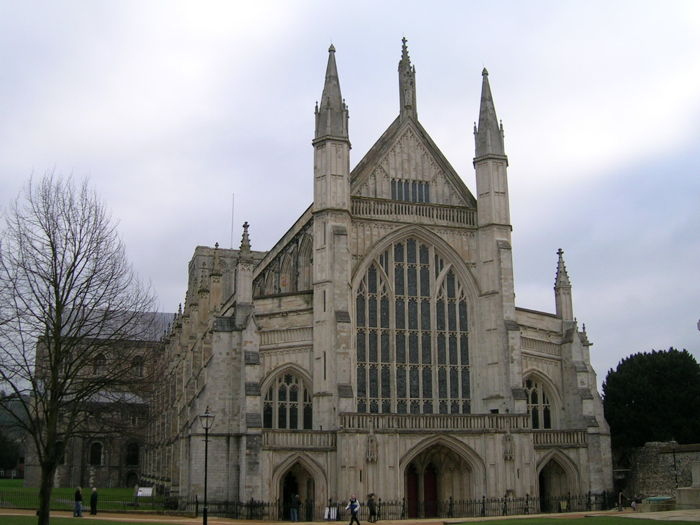Winchester Cathedral
|
Winchester Cathedral Winchester Cathedral at Winchester in Hampshire is one of the largest cathedrals in England, with the longest nave and overall length of any Gothic cathedral in Europe. Dedicated to the Holy Trinity, Saint Peter, Saint Paul, and Saint Swithun, it is the seat of the Bishop of Winchester and centre of the Diocese of Winchester. Construction of the cathedral began in 1079 under bishop Walkelin, and on April 8, 1093, in the presence of nearly all the bishops and abbots of England, the monks removed from the Saxon cathedral church of the Old Minster to the new one, "with great rejoicing and glory" to mark its completion. The earliest part of the present building is the crypt, which dates from that time. William II of England and his older brother, Richard, Duke of Bernay are both buried in the cathedral. The squat, square crossing tower was begun in 1202 to replace an earlier version which collapsed, partly because of the unstable ground on which the cathedral is built. It has an indisputably Norman look to it. Work continued on the cathedral during the 14th century. In 1394 the remodelling of the Norman nave commenced to the designs of master mason William Wynford, this continued into the 15th and 16th centuries, notably with the building of the retroquire to accommodate the many pilgrims to the shrine of Saint Swithun. |

|
|
Winchester Cathedral An unspoilt cathedral city on the edge of the South Downs, Winchester is England's ancient capital and former seat of King Alfred the Great. Today, Winchester combines the best of city life with the freshness of the surrounding countryside. One hour from London, this is England as it ought to be. Phonto 70, 1979 |

|
|
Winchester Cathedral, South Face Phonto 65, 1979 |

|
|
Winchester Cathedral, tombstone Phonto 68, 1979 |

|